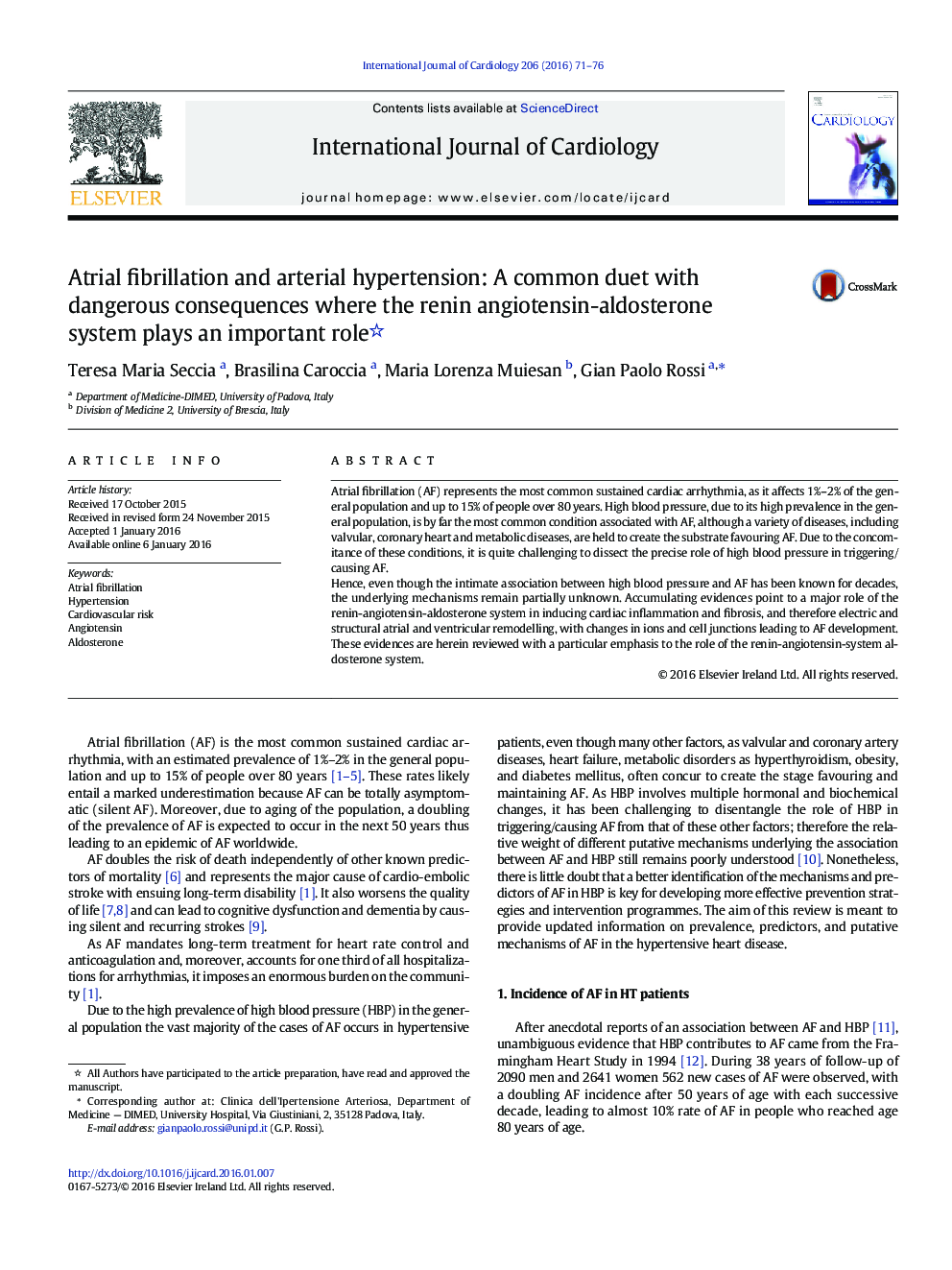| Article ID | Journal | Published Year | Pages | File Type |
|---|---|---|---|---|
| 2928741 | International Journal of Cardiology | 2016 | 6 Pages |
•Atrial fibrillation (AF) is the most common arrhythmia in the adult population, and is common in the patients with HBP.•Evidences point to a major role of the renin-angiotensin-aldosterone system in inducing cardiac fibrosis and remodelling.•An increased risk of AF was seen in primary aldosteronism, suggesting a causative role of aldosterone in AF development.
Atrial fibrillation (AF) represents the most common sustained cardiac arrhythmia, as it affects 1%–2% of the general population and up to 15% of people over 80 years. High blood pressure, due to its high prevalence in the general population, is by far the most common condition associated with AF, although a variety of diseases, including valvular, coronary heart and metabolic diseases, are held to create the substrate favouring AF. Due to the concomitance of these conditions, it is quite challenging to dissect the precise role of high blood pressure in triggering/causing AF.Hence, even though the intimate association between high blood pressure and AF has been known for decades, the underlying mechanisms remain partially unknown. Accumulating evidences point to a major role of the renin-angiotensin-aldosterone system in inducing cardiac inflammation and fibrosis, and therefore electric and structural atrial and ventricular remodelling, with changes in ions and cell junctions leading to AF development. These evidences are herein reviewed with a particular emphasis to the role of the renin-angiotensin-system aldosterone system.
